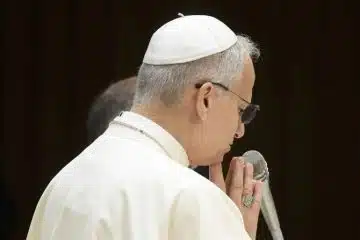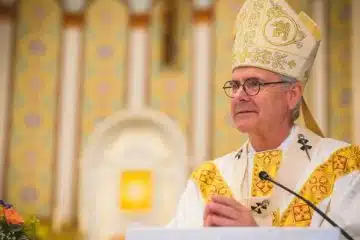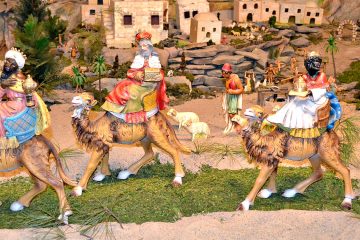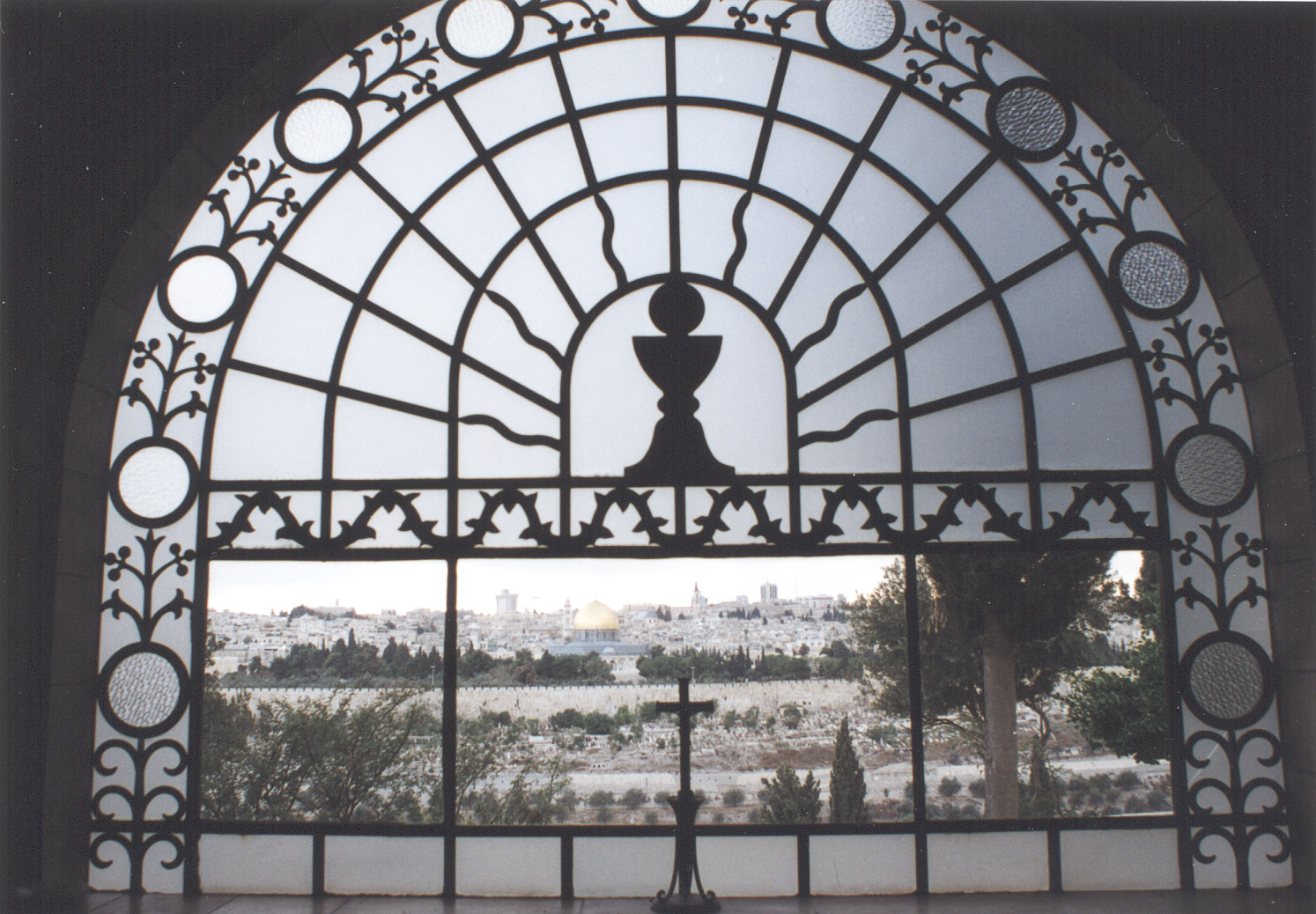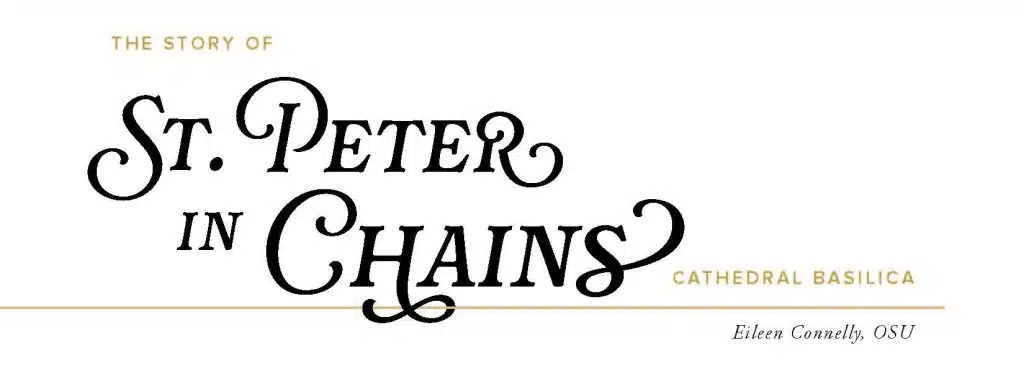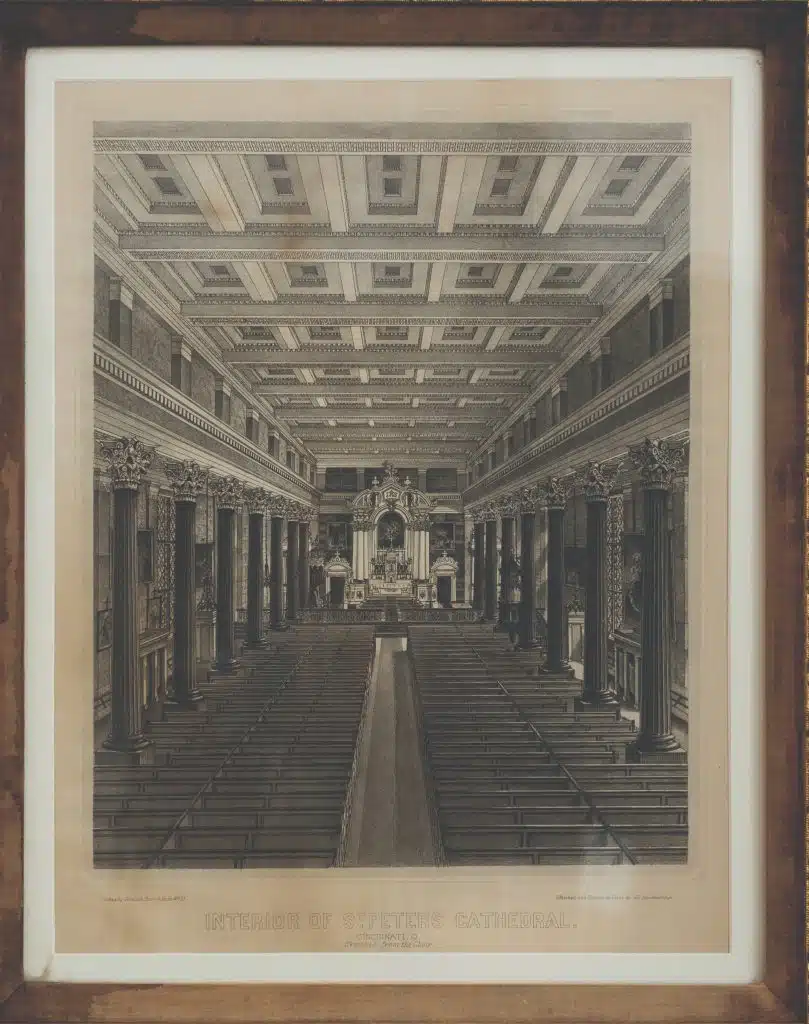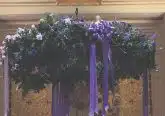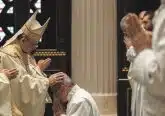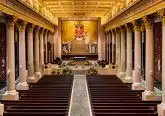St. Peter in Chains Cathedral Basilica
The Cathedral Basilica of St. Peter in Chains in downtown Cincinnati has been a beacon of faith and hope for area Catholics since its dedication nearly 180 years ago.
Two of Cincinnati’s faithful shepherds played significant roles in its construction or renovation: then-Bishop John Baptist Purcell and Archbishop Karl Joseph Alter. Their planning and foresight ensured the structure stood the test of time.
“The first and most urgent want of this diocese is a suitable cathedral” said Bishop Purcell in 1841. Made bishop of the Catholic Church in Cincinnati in 1833, he was elevated to the rank of archbishop in 1850 and died in 1883.
In an Oct. 29, 1840 letter to architect Thomas Spare, Bishop Purcell specifically described his plans for the new cathedral: “The cathedral I would propose is about seventy feet by one hundred feet, Grecian style of architecture, with portico and colonnade in front, with vestibule, all about 30 or 40 feet deep, and with a steeple carried up from the foundation … The ceiling I am inclined to have is flat, or but slightly curved. Also, a choir loft … It is intended to have a basement story destined for Sunday schools and places of meeting, chiefly above ground. The roof is to be covered with zinc or copper. These specifications, I presume, will be sufficient.”
A report in the May 22, 1841 issue of The Catholic Telegraph described the scene when the cornerstone for St. Peter in Chains was laid, noting that “the Rt. Rev. Bishop Purcell addressed the people who listened with the greatest attention” and expressed that “we hope that the good work so propitiously begun will continue to receive the divine blessing, until the edifice be completed, so as to be an honor to our holy religion, so wonderfully diffusing itself all around, and worthy of the Queen City. This is a great undertaking, but in God is our trust, for He knows that we do it all for His honor.”
The momentous occasion of the cathedral’s dedication on Nov. 2, 1845, saw it featured once again in the Telegraph, several days later: “The long expected and gratifying ceremony took place on last Sunday. Thus after more than five years labor, the Catholics of Cincinnati have crowned their hopes by the erection and consecration of a cathedral, which no one can behold within expressing their admiration of its beauty, proportions and durability.”
Visitors to the cathedral who expect a Gothic style are often surprised to see it resembles a government building, an insightful intention by Bishop Purcell.
Father Jan Schmidt, current rector of the Cathedral Basilica, explained, “Amid the anti-Catholicism of the time, he wanted the cathedral to be a statement that the Catholic Church was a permanent institution on American soil and that Catholics were just as American as the Protestant population.”
By the 1930s, however, the cathedral was dilapidated, and its towering spire was covered with soot. Cathedral status transferred in 1938 to St. Monica Parish in Clifton Heights, north of downtown Cincinnati. But in 1951, Archbishop Karl J. Alter declared, “We are going home,” and began a complete renovation and reconstruction of the current cathedral. The work was overseen by architect Edward Schulte, who designed new transepts, a rectory, the sacristy and archdiocesan offices. In excerpts from The Lord Was My Client, Schulte noted Archbishop Alter’s commitment to returning St. Peter in Chains to its former beauty and to preserving its historic significance, and he expressed his gratitude for “entrusting this extremely important work to me.”
The church’s rededication as the cathedral on Nov. 3, 1957, opened a week of celebrations. At the Solemn Pontifical Mass following the structure’s rededication, Covington Bishop William T. Mulloy declared the restored Cathedral of St. Peter in Chains is a “monument of the love and veneration that the people … and their leaders in this area have for their God.” During the dinner after the Mass, Archbishop Alter said, “What could be more fitting than that we should gather together that which is most precious in stone and marble, gold and bronze, carved wood and jeweled glass, joined to the artist’s talents in form and color, in order to celebrate the glory of the most high God. Thus we make a return to Him of His own generous bounty on our behalf.”
He noted that some of the deciding factors for returning the cathedral status to St. Peter in Chains were “the architectural excellence of the building, its historical associations, and its accessibility.”
“We hope that the cathedral, by its very presence in the midst of our city, will lift up the hearts and minds of all our people to heavenly desires,” Archbishop Alter said. “If the cathedral were to endure merely as an architectural monument, if it were to become nothing more than an artist’s vision of earthly beauty, it would have failed notably in its purpose. It is intended rather to be a sermon in stone and an unending hymn of praise to the majesty of God and His goodness to men.”
This article appeared in the June 2025 edition of The Catholic Telegraph Magazine. For your complimentary subscription, click here.


